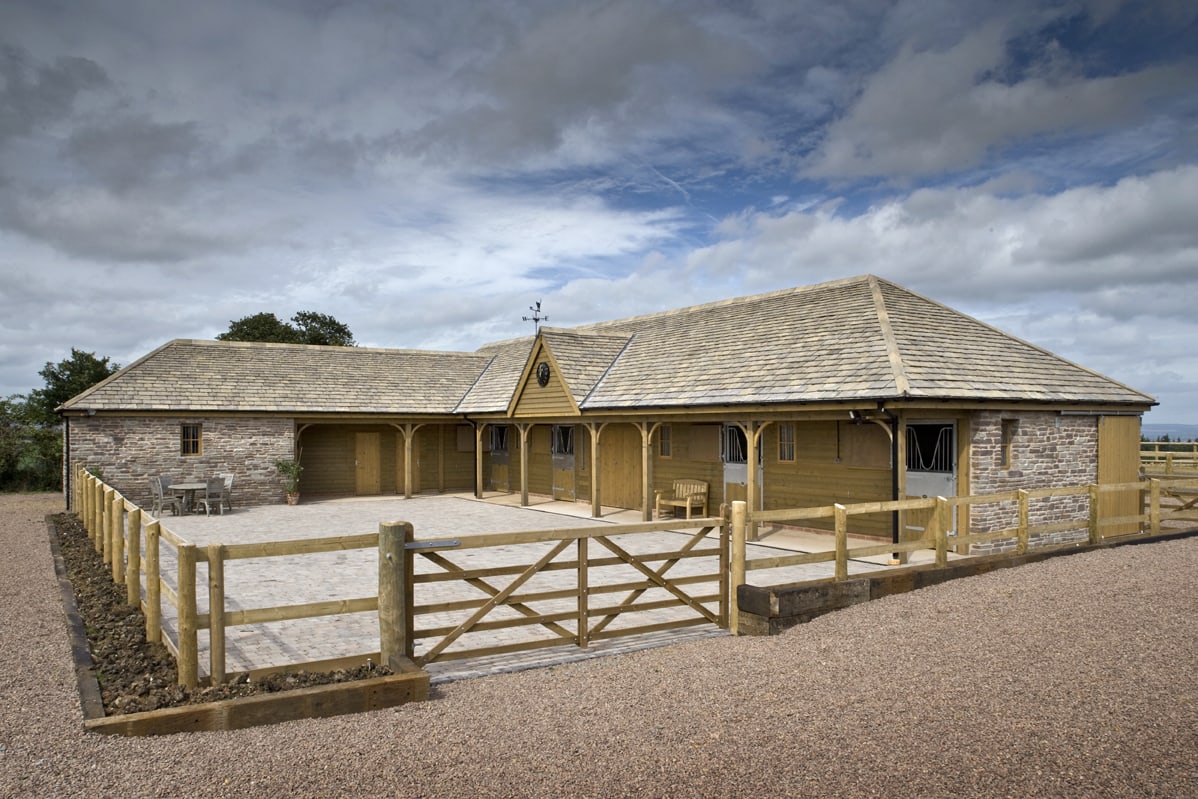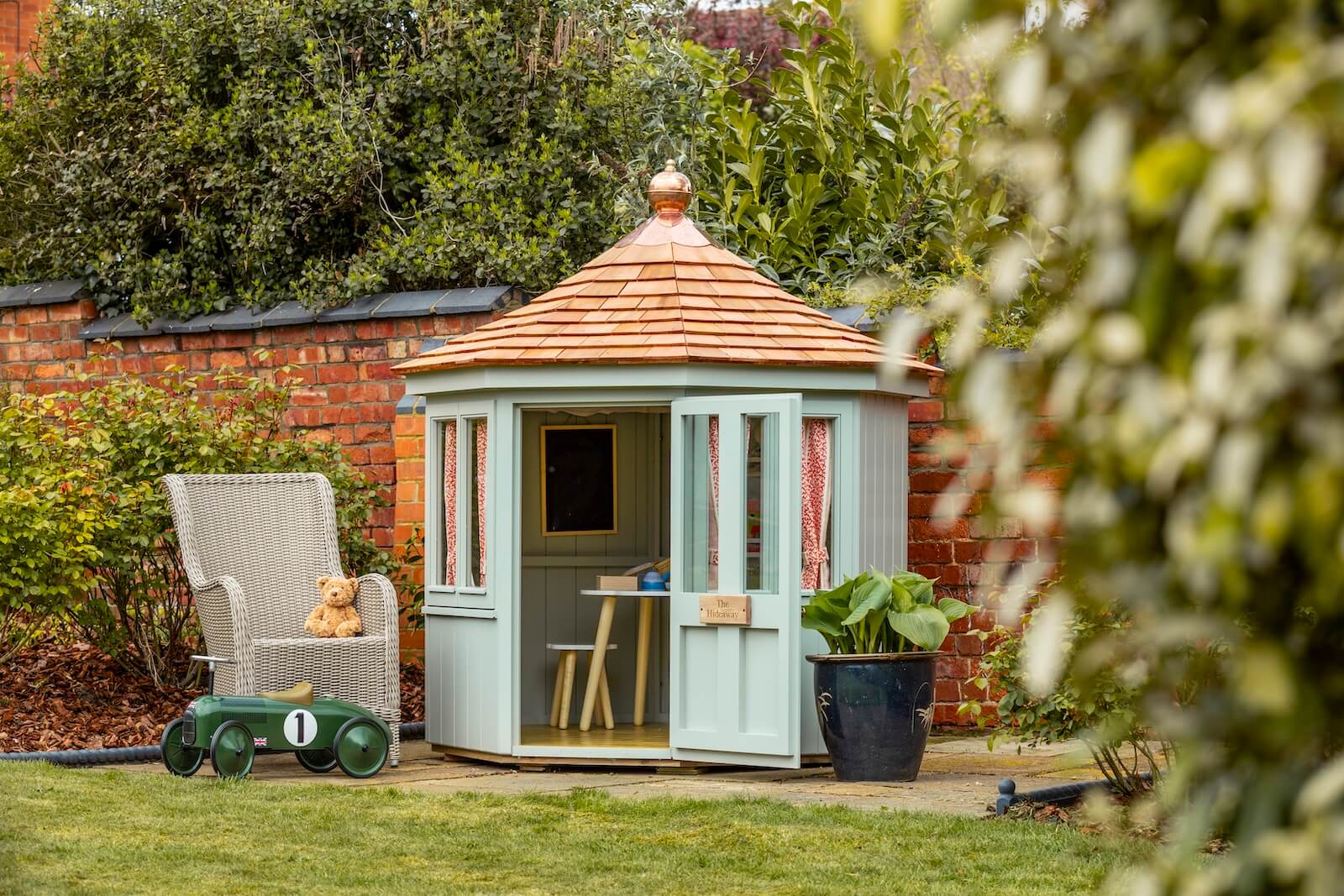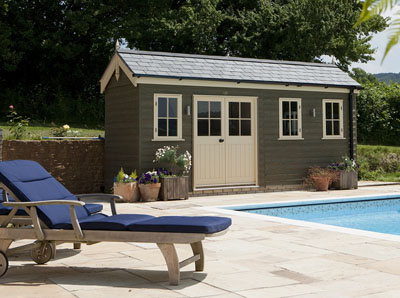You have welcomed your summer house into the family, and it now takes pride of place in the garden. A summer house is simple to maintain but you will want to make sure that you look after it properly to maintain its stunning appearance for many years ahead.
Its situation outdoors means that your summer house will inevitably be exposed to extremes of weather from the drying heat of the sun to ice and snow, and often wildly varying temperatures in the spring and autumn. Weather conditions affect wood because it absorbs water and expands, and then contracts when it’s dry, potentially causing movement and shrinkage. In addition, moisture attracts the threat of rot and mould.
Of course, the degree of maintenance depends on the type of summer house construction you choose. A softwood building will inevitably require more maintenance, care, and attention than a summer house built from hardwood.
What’s the difference?
- Softwood comes from gymnosperm trees such as conifers.
- Hardwood originates from angiosperm broad-leaved deciduous trees.
Tips to Protect a Softwood Summer House: Treatments
Softwood garden buildings need to be treated with wood preservative from the walls to the floorboards (including the underside) immediately on installation and approximately every three to five years. Untreated wood becomes grey and attracts decay, mould and insects. Choose a water-based preservative and apply multiple coats leaving at least two hours drying time between each coat. Pay careful attention to cut ends, joints, overhangs and fascias.
Next you will need to apply a coat of wood stain or paint to afford robust protection from the elements. Choose from a translucent or opaque stain depending on the aesthetic you desire. Wood stain enhances better quality wood, and you can find eco-friendly wood preservative and stain if preferred.
Painting your summer house might be a better option if the wood is less good quality as it covers imperfections more effectively. Use a primer and apply at least two coats. Avoid using oil-based products on pressure-treated wood.
Choose your paint colour carefully to complement your property and the overall style aesthetic of your garden. Decide whether you want it to blend in with its surroundings or make a bold statement.
Maintaining a Hardwood Summer House
If you are keen to limit the amount of maintenance, you need to carry out on your summer house, choose a model that offers a long life. All Scotts’ summer houses are built from a sustainable hardwood known as Red Grandis which comes from the eucalyptus tree. It is exceptionally durable as well as being resistant to mould, mildew, and rot.
Your Scotts summer house will arrive ready painted in a spray finish according to your choice of colour. Factory-finished paint surfaces are highly flexible and weather-resistant. The microporous topcoat enables five to seven years of maintenance free life depending on the location of your summer house. All you will need to do is wash down the walls with mild soap and water in the spring.
If you need to touch-up the paint, take a systematic approach and work on one section at a time. Ensure that your working area is well-ventilated and avoid using paint if rain is due or if the temperature drops below 5°C as it will not dry properly.
Protection for your Summer House – Maintenance Checklist
While we hope that you will find inspiration to enjoy your summer house all year round, the start of spring is usually a good milestone for re-energising your garden building. Follow the steps below to carry out a comprehensive round of maintenance.
Step 1:
Start with the outdoor area and take a tour of the summer house walls and base to check for any damage. Remove any lichen or fungus with a fungicidal wash and sweep away and dust or debris from the walls. Scotts offer a rotating base option for its smaller models and it’s important to sweep under the skirt to clear any dead leaves and debris. The nylon wheels on our rotating base are maintenance free so there’s nothing to do there!
Step 2:
Check the roof for any damage that might have been caused by fallen debris, and repair as required. If roofing felt has been installed, it is possible to fix splits and tears with repair adhesive, but you may need to replace the entire roof to be fully confident of its integrity.
Again, if you select a Scotts summer house, the roofing will be maintenance free because we only use composite glass fibre or cedar shingle roofs, depending on the model you choose. Composite glass fibre roofs protect against the potential damage of UV rays. We use only high quality, Grade 1 Western Red roof shingles constructed on a stress graded timber frame with a breathable underlay. The natural style of a cedar shingle roof creates a stunning feature in your garden and looks after itself.
Interested in changing your summer house roof? Click the link to discover the best roof ideas for your summer house.
Step 3:
Moving inside the summer house, check the doors and windows to ensure that they open freely, lubricating the hinges to keep them in smooth running order. Use a soft cloth and soapy water to polish window furniture and add beeswax or a high-quality car cleaner when cleaning brass fittings.
Airing your summer house is vital as a single-skinned building with a high ratio of glazing attracts moisture and condensation. You should aim to open up the doors and windows regularly throughout the year to promote good ventilation and allow your summer house to breathe. You might want to try moisture-absorbing tablets or even a mini dehumidifier. Scotts offer double glazing and a moisture-resistant insulation option which is installed behind tongue and groove effect lining made from 9mm thick, exterior grade MDF.
Step 4:
Still inside the summer house, be sure the sweep out the floor. Scotts offer a unique and durable flooring option made from woven vinyl that delivers the natural feel of sisal and seagrass. Simply sweep the floor occasionally and hand wash with floor cleaner.
Keep any upholstery clean (Scotts’ seat pads and cushion covers need to be dry-cleaned). If you are putting your summer house to bed for the winter, remove upholstery and store it in an airtight bag.
Check the inside of the roof and sweep away any dust and cobwebs from the eaves. Scotts summer houses are equipped with plain cream fabric lining which should be unhooked periodically and given a shake, and then stored away in airtight bag when the summer house is not in use.
Step 5:
Your summer house enables you to connect with your garden and should become integral to your outside space. Maintaining the garden area that surrounds it will serve to enhance its appeal as a place of seclusion and peace.
Start by pruning any nearby bushes and trees. It’s aways best to keep your summer house clear of overhanging branches that could damage its roof or create a mess from falling leaves or roosting birds.When the season is right, tend to your pots and planters, adding a splash of floral colour that complements your summer house tones.A sedum or green roof provides an attractive natural feature and also helps to promote biodiversity. This type of roof should be low maintenance subject to a check of the drainage membrane. You may need to remove any moss or weeds, but the concept lends itself to a little re-wilding!
Low Maintenance Summer House Choices
Ideally you will want to spend most of your time enjoying your garden building with the minimum of chores. There will always be a level of work to keep it in tip-top condition but the choices you make at the point of purchase will affect the degree of maintenance that your summer house requires. Scotts use highly durable and low maintenance materials including hardwood, composite glass fibre and cedar shingles to prolong your enjoyment make life easier.
Our team is standing by to answer your questions about summer house maintenance and we hope to reassure you that most of the time you spend in your garden building will involve activities you really enjoy.
Call us now on 01832 732366 or complete our online form and we will contact you.
Like this post? You might also enjoy reading:
- How do add heating to your summer house
- Summer houses at Christmas: How to decorate your summer house
- Summer house lighting ideas
- Summer houses with electricity
- Can you use a summer house in Winter?
- Summer house insultation and double glazing











